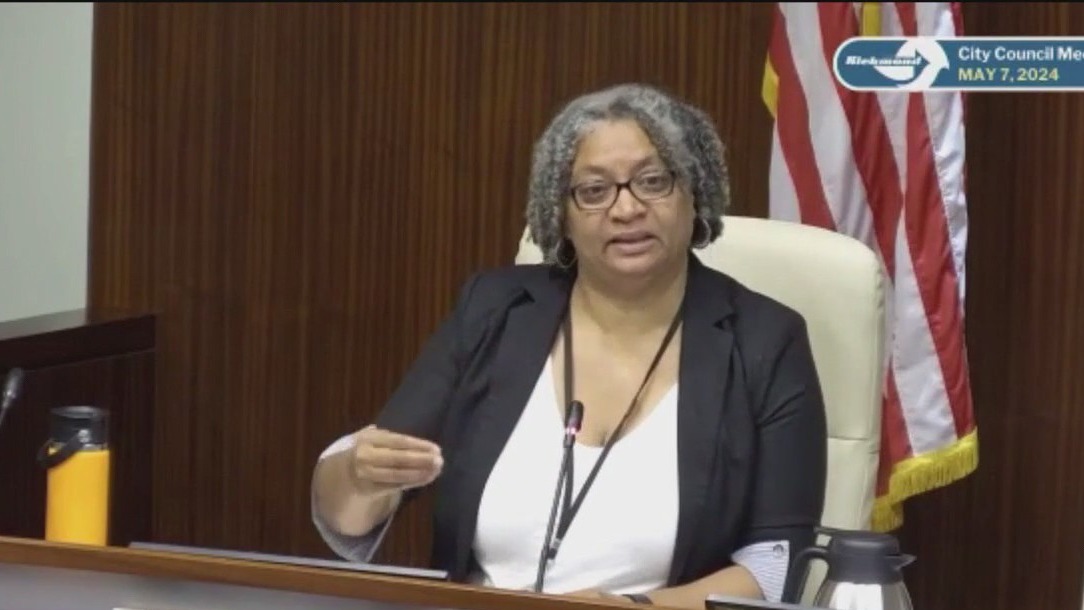California
At This California Dude Ranch, A Horse Girl’s Dream Comes True

With a stable of over 100 horses and more than 50 miles of trails on 10,000-plus acres, Alisal Ranch … [+]
If you’ve never sat on a horse, that first moment in the saddle can feel a little awkward, even intimidating. But for one young wannabe cowpoke, it was more like a dream come true. My college-age son’s girlfriend, Lana, has loved horses forever. But she never had the opportunity to ride one. Over winter break this year, she unlocked that new level at Alisal Ranch.
Tucked away in the sun-kissed hills of California’s Santa Ynez Valley near Solvang, the 10,500-acre family-owned property is an old-fashioned place to stargaze, fish and canoe on a 100-acre lake, and shoot arrows at decoy elk and boar. It’s also home to a stable with over a hundred magnificent horses.
Jack is a sweet, chestnut-colored stallion with a touch of grey between his gentle eyes. When Lana first swung her leg over and carefully set her feet into the stirrups, Jack looked back with a kindly, “You’re doing just fine, girl” kind of nod. Alisal has more than 50 miles of trails for beginner, intermediate and advanced riders age seven and up, and the ranch gets even first-timers out on two-hour starter rides. That might sound like daunting for a newbie, but Ben, the genial wrangler, made it a manageable introduction, and definitely one to remember. Out on the trails, you get to see wild turkeys, coyotes, eagles, foxes and more than a few adorable cows, which makes even a greenhorn feel like an extra in an old Western.
The network of trails at Alisal lets riders take in sweeping views of the Santa Ynez Mountains (and … [+]
If Lana was anxious, it was hard to tell. The giant smile on her face told a different story as Jack clip-clopped up a golden slope past ancient sycamores to take in the epic view (you can spot the Reagan Ranch — once known as The Western White House — on a hilltop across from the property.).
Alisal meets riders wherever they are in their ability. Kids as young as four can take 30-minute riding lessons in the controlled environment of the corral. There’s a one-hour starter ride for those who aren’t quite ready to commit to a longer outing, a three-hour picnic ride with lunch carried in your saddlebags, and a new three-hour distance ride, for those craving higher views or to see more wildlife. Horsemanship 101, for any level of rider, pairs you with senior wranglers to improve your individual riding skills in an arena setting (there’s even an obstacle course if you’re willing).
One of the most popular offerings is the morning breakfast ride, 45-minute to one-hour horseback ride each way with breakfast in the middle. Think of it as flapjacks on horseback, an outing that lasts approximately three hours, and is open to non-riders, too, who can take a hay wagon ride to brekkie instead of a horse.
Family owned and family friendly, Alisal Ranch has been around longer than California’s been … [+]
Alisal’s been around longer than California’s been California, but opened as a luxury working ranch in 1946 and owned by the Jackson family ever since. Today, it’s a stylish dude ranch with benefits: 18-hole golf, tennis and pickle ball courts, axe throwing, mountain biking and a spa. The accommodations are too rarefied to call “glamping”—especially the more recently remodeled estate houses lining the front driveway. For example, the 1,620-foot wood and stone Turner House, with Ralph Lauren fabrics and Pendleton accessories, sleeps ten and has claw-footed bathtubs and wood-burning fireplaces.
The Turner House is one of the more recently renovated estate homes on property. With Ralph Lauren … [+]
Meanwhile, up on the trails, Lana found herself bonding with Jack while also gaining confidence in herself after tackling an adventure she’d put off for too long. It’s one thing to read about horses or to play with those adorable little Schleich collectibles. It’s quite another to be on the trail in a place like Alisal Ranch and let out a great big ‘yee-haw!”

California
California regulators to vote on changing how power bills are calculated
SACRAMENTO, Calif. (AP) — California regulators on Thursday are likely to change how some power companies calculate their customers’ bills, a decision that would make it less expensive for people to charge electric cars and cool their homes in the summer but would increase prices for those who don’t use as much energy.
The California Public Utilities Commission will vote on whether to let the state’s big investor-owned utilities — including Pacific Gas & Electric — add a fixed charge to people’s power bills each month. For most people, the charge would be $24.15 per month and would pay for such things as installing and maintaining the equipment necessary to transmit electricity to homes. Residents with lower incomes who are enrolled in one of two discount programs would pay less, either $6 or $12 per month.
In exchange for the new charge, the price of electricity would drop by between 5 cents and 7 cents per kilowatt hour. One kilowatt hour is how much power it takes to use a 1,000-watt appliance — a coffee maker or vacuum cleaner, for instance — for one hour.
For people who use a lot of energy each month, this could could lower their monthly bills. People who live in Fresno — where temperatures can often exceed 100 degrees Fahrenheit (37.8 degrees Celsius) — would save about $33 running their air conditioners during the summer, according to the commission. That’s because the savings they would get from the price drop on electricity would be more than the amount they pay for the new fixed charge.
It would also benefit people who own electric cars and use other electric appliances, such as heat pumps. They would save an average of between $28 and $44 per month, according to the commission. In 2022, California accounted for 37% of the nation’s light-duty electric vehicles, or about six times more than Florida, the state in second place, according to the U.S. Energy Information Administration.
“The new billing structure more evenly allocates fixed costs among customers and will encourage customers to adopt electric vehicles and replace gas appliances with electric appliances because it will be less expensive,” Administrative Law Judge Stephanie Wang wrote in a proposed decision explaining the charge.
For people who don’t use as much energy, the new fixed charge could increase their bill each month. This includes people who live in smaller apartments or who live in cooler areas and don’t use air conditioning as much. That’s because for them, the decrease in the price of electricity would not be enough to offset the amount of the new monthly charge.
Opponents argue it would act as a disincentive to conserve energy, something California has been urging people to do.
“If you wanted to design a policy instrument that would send the signal that conservation doesn’t count, this would be it,” said Ken Cook, president of the Environmental Working Group.
Most states already have fixed monthly charges on utility bills to pay for maintenance and infrastructure of the electric grid. But in California — where electric rates are among the highest in the nation — any move that could increase prices for anyone raises alarms among consumers and elected officials.
A group of 18 members of Congress from California have called on the commission to keep the rate low, noting the national average for fixed charges on utility bills is $11. Some Democrats and Republicans in the state Legislature have backed a bill that would cap the charge at $10 per month.
“We must do more to rein in the ever-growing cost of living in our state, not find new ways to add to it,” Republicans in the California Senate wrote in a letter urging the commission to reject the proposal.
The proposal is much lower than what the state’s investor-owned utility companies had asked for, which was a charge between $53 and $71 per month. The commission also argues the charge would not discourage conservation, noting utilities are already allowed to increase rates during peak hours.
California
California gets moisture, needs warmth – Brownfield Ag News

News
California gets moisture, needs warmth
An atmospheric scientist says the state that leads the country in fruit and vegetable production has recovered from drought but has a different threat to this year’s crops.
Eric Snodgrass with Nutrien Ag Solutions tells Brownfield California needs warm weather and the accompanying heading degree units so the crops will grow. “Just to think this through, the severe weather event that’s going on right now in the central U.S., that started out this weekend in the west and they had snow all the way down to the foothills of the Sierra Nevadas.”
Snodgrass says the north-south jet stream that is bringing severe storms to the Midwest is also responsible for the chilly air in California. He says the rest of the country is also looking at some cool nights between the 11th and 14th of May, which will also slow down growth there. “We get down there right below that 40 degree line early in the morning, and then sunshine comes out and we kind of break away towards warm. You’re not accumulating a whole lot of GDDs (Growing Degree Days) fast, in other words, as you plant the crop, it’s not like it’s going to emerge in a week. We’re going to have to get that cooler air out.”
Snodgrass says even with the chilly air in the forecast, he’s not expecting a major late frost event that would cause widespread damage to crops. As for moisture, Snodgrass says California had plenty of precipitation in December and January, and again in March and early April.
California
Richmond urges California to cut ties with PG&E

Richmond council urgles California to cut ties with PG&E
Richmond City Council passed a resolution that urges California to cut ties with PG&E
RICHMOND, Calif. – The Richmond City Council on Tuesday night passed a resolution urging California to cut ties with PG&E.
The resolution calls on the state to replace the utility company as California’s main power supplier, citing PG&E’s contributions to wildfires, shut-offs and rate hikes and reasons for the proposed split.
Councilmembers said they support a nonprofit called Golden State Energy to take over.
“We’re saying that ‘We, the city of Richmond, stand behind implementation of something already in place,’” Councilwoman Doria Robinson said.
The letter of support will now be sent to a number of state leaders including Gov. Gavin Newsom.
-

 Politics1 week ago
Politics1 week agoStefanik hits special counsel Jack Smith with ethics complaint, accuses him of election meddling
-

 Politics1 week ago
Politics1 week agoThe White House has a new curator. Donna Hayashi Smith is the first Asian American to hold the post
-

 Politics1 week ago
Politics1 week agoAnti-Trump DA's no-show at debate leaves challenger facing off against empty podium
-

 News1 week ago
News1 week agoAs student protesters get arrested, they risk being banned from campus too
-

 News1 week ago
News1 week agoVideo: Police Arrest Columbia Protesters Occupying Hamilton Hall
-

 World1 week ago
World1 week agoNine on trial in Germany over alleged far-right coup plot
-

 Politics1 week ago
Politics1 week agoNewsom, state officials silent on anti-Israel protests at UCLA
-

 World1 week ago
World1 week agoStrack-Zimmermann blasts von der Leyen's defence policy



















